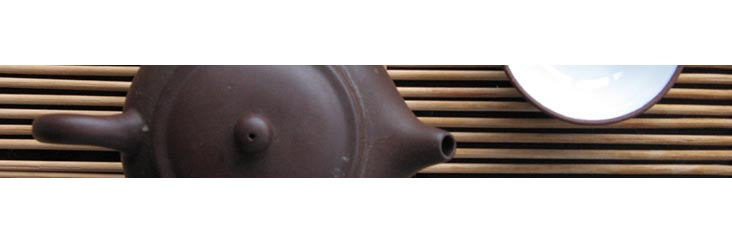News
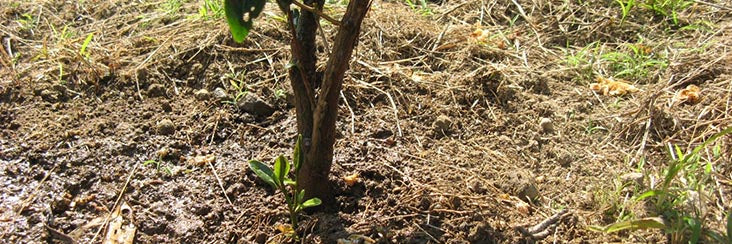
Seasonal Shifts And Their Effects On Our Brew
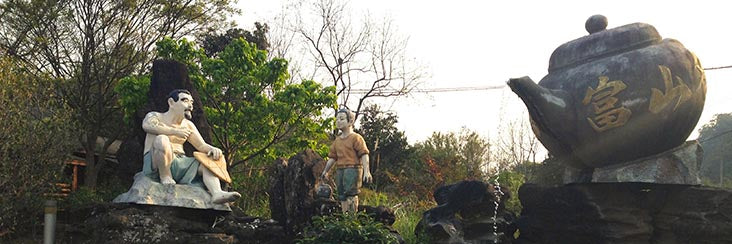
The Quest for Oriental Beauty
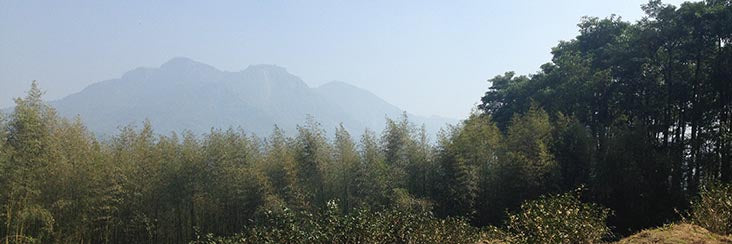
New Year's Blessings On The Newly Planted Garden
We took this photo on New Year's Day last week, when we visited this newly planted garden that will be harvested for the first time this spring.
This farmer first showed us how Dong Ding Oolong Tea was made about 18 years ago.
We plan to procure tea from this new young crop that is surrounded by forest and cultivated sustainably.
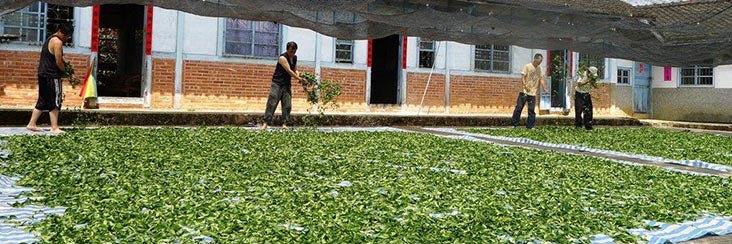
Tea Story #3: Traditional Dong Ding Oolong Tea, Spring 2013

Review: Shan Lin Xi High Mountain Black Tea Review by Amanda Wilson
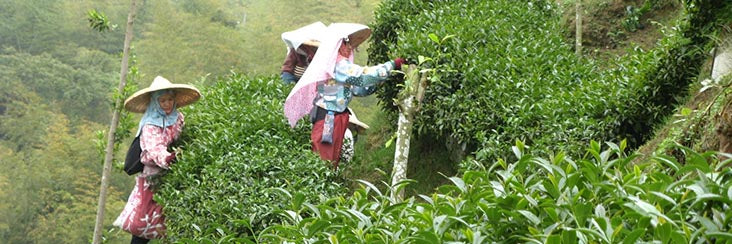
Tea Story #2: Shan Lin Xi High Mountain Black Tea, Winter 2012
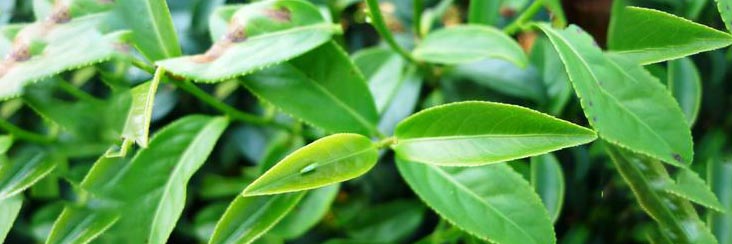
Tea Story #1: Shan Lin Xi High Mountain Concubine Oolong Tea, Winter 2011
An elusive type of tea that varies with each batch made, from season to season – depending on the presence of a small insect. Concubine Oolong is the result of the leaves being bitten by a tiny fly during growing season. This causes a kind of "scarring" of the leaf which results in partial oxidation while the leaf is still growing. It also instigates an immune system response in the plant, resulting in a unique flavor. Normally, this bug is deterred by the regulated use of a water soluble pesticide sprayed on the plants early in the growing season. More and more, farmers are allowing their plants to go unsprayed at least one season in the year. Typically this is done in summer, the most prolific season for the insect that is responsible for the production of Concubine tea.
Produced in Northern Taiwan, a more common name for "bug bitten" tea is Oriental Beauty (Dong Fang Mei Ren - also called Bai Hao Oolong or Peng Feng Cha). Oriental Beauty is made from a slightly different green heart oolong varietal than that which is cultivated for high mountain tea in Central Taiwan. Concubine also differs from Oriental Beauty in that the Concubine leaves are tightly rolled in the manner of a modern Taiwan Oolong, rather than the traditional mainland China method of curled, open leaves. Tightly rolling the leaves is a Taiwanese innovation that protects and preserves the tea.
Our tea mentors happened upon this batch of tea while tasting a farmer friend’s Shan Lin Xi high mountain spring tea. The farmer mentioned in passing that he had a batch of tea from the winter prior’s harvest that had been affected by this bug due to an oversight in not spraying a small section of his self-run farm. It is very rare to find winter tea produced in this fashion from a high elevation farm.
It is a relatively small farm, managed by a husband and wife team who transformed their plot of virgin high mountain bamboo forest into a tea garden just ten years ago. Currently in its prime age, the tea garden is at about 1,600 meters elevation in one of the largest and most popular regions of Taiwan for producing top quality high mountain oolong tea. This couple manages their farm by themselves, using only natural fertilizers, zero weed killers, and only a minimal amount of water soluble pesticides early in the growing season. They produce approximately 300 pounds of tea from a typical day's spring harvest, compared to 1000 pounds a day from larger productions in the area.
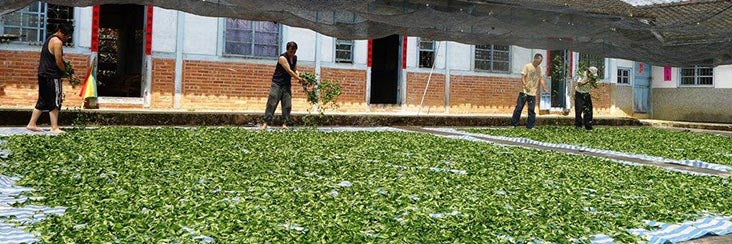
What is Artisan About Artisan Tea
This post was originally shared with our friends at TChing, they have a great tea blog, check them out.
As people interested in premium teas, we have all been exposed to the term “artisan” being used in many contexts. This begs the question as to what actually defines a tea as being artisan. This post is meant to begin a conversation, with follow ups on how this issue is being addressed within the industry here in Taiwan.
Reflecting on this question, I was inspired to call on a friend with passionate conviction on the topic. I first visited Mr. Lin in his tea factory and home - a traditional 3-sided house on Dong Ding Mountain - some 20 years ago. One of three brothers who inherited the tea farm, he became the representative of their tradition by moving off the mountain and raising his family in the city. He has been a professional tea judge at the Lu Gu Farmers’ Association Tea Competition for many years, and has been continually involved in the education and representation of tea culture in Taiwan. He is passionate about his inheritance of the Dong Ding Oolong tradition, as well as highly informed of the trends in Taiwan’s tea industry - both past and present.
In two words, his essential definition of artisan tea is all about “handmade” and “oxidation” - which in this case are one in the same process. The leaves need to be shuffled by hand repeatedly over several hours throughout the oxidation process. These terms immediately led into other factors such as how much tea can be harvested and processed at once using traditional methods, and who is employing these deep and complex procedures, and the discussion ensued. Of course, this is the response from a Traditional Dong Ding Oolong Tea artisan - so we are referring here only to what defines “Artisan Oolong Tea”. Our conversation touched on many factors, but his answer centered on processing methods - which prompted the recollection of my early visits to tea country.

At that time, all I saw in the factories I visited were the traditional woven bamboo trays that were filled by hand with freshly wilted leaves exuding a heady yet truly refreshing aroma in racks about 200cm high mounted on wheels. A small forest of racks filled small spaces in which they were rearranged systematically amidst frequent shuffling of the leaves in their trays by hand, combined with tumble rolling in a large woven bamboo horizontal cylinder.. The timing of the shuffling by hand and tumbling was largely determined by examining (touching, smelling, and seeing) the state of the leaves and how far along in the wilting and oxidizing process they were.
Some factories had two or three tumbling cylinders accommodating relatively large harvests - which then were maybe 600 台斤 茶青 or nearly 700 pounds of freshly harvested leaf - which produces about 175 pounds of tea. That was a large harvest on the farms I was familiar with at that time, but that’s only because my first contact was with Traditional Dong Ding Oolong artisans whose tea factories were typically built into their homes.
This is the context and small-scale production level that my friend referred to in response to my question. It is his firm conviction that artisan oolong tea is comprised of hands-on contact with the leaves as they are processed. The frequent shuffling of the leaves by hand is an essential aspect of proper oxidation. According to him, without this process, it is not artisan tea. Beyond oxidation, there are other steps in the processing of oolong that have been mechanized or simply eliminated - such as rolling methods and post production roasting - that are essential in the making of Traditional Dong Ding Oolong.
Hands-on contact with the leaves is far more than a labor intensive processing method. It is based on an experienced understanding of the overall conditions that each harvest entails - beginning with the growing season, the weather at harvest time, and the state of the leaves as they are processed.
This understanding of the leaves prompts the artisan to adjust the processing methods according to the current conditions. The freshly picked leaves are also brewed and tasted at different stages in the processing which determines the timing and extent of each step.
Traditional tea making is an integrated process determined by expertise that is gained over years and generations of careful observation and trial and error learning. This is why it cannot be done by standardized procedures employed by hired labor. It requires a living apprenticeship that transmits understanding and skill.







